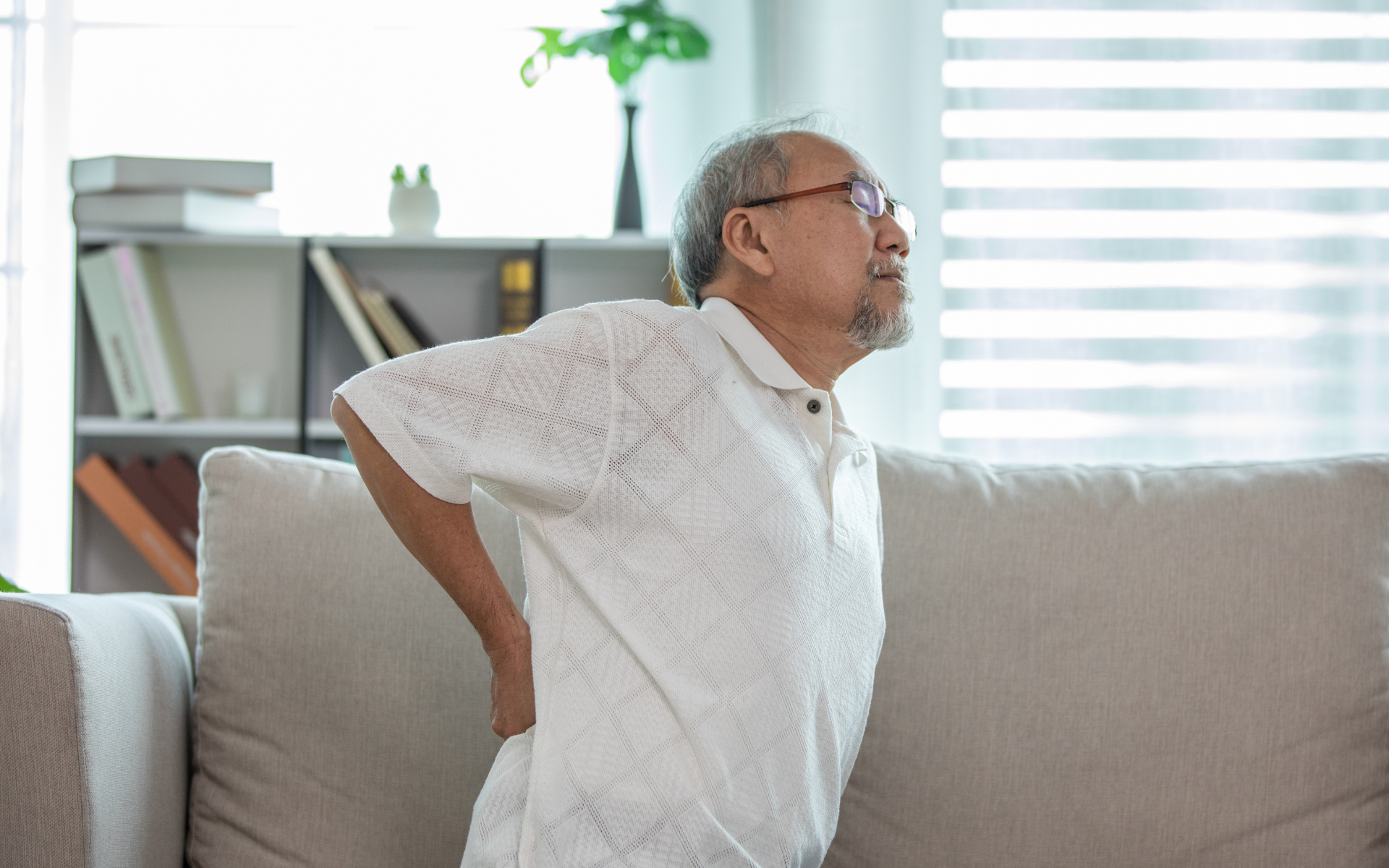Top Categories
Introduction to Age-Related Back Pain
Age-related back pain, inherently linked with the natural ageing process, involves various degenerative changes in the spine. These changes can lead to persistent discomfort, impacting an individual’s mobility and overall quality of life. With a focus on understanding the nuances of age-related back pain, this article aims to explore its causes, symptoms, preventative measures, and effective treatment options.
Common Causes of Age-Related Back Pain
The spine’s structure and functionality are susceptible to the natural wear and tear associated with ageing, leading to various conditions that contribute to age-related back pain:
Osteoarthritis
Often seen in older adults, this condition results from the breakdown of cartilage in the joints and discs in the spine, causing stiffness and pain.
Spinal Stenosis
Characterised by the narrowing of spaces within the spine, which can compress spinal nerves and lead to pain, numbness, or weakness in the legs.
Disc Degeneration
With age, spinal discs lose their fluid and flexibility, diminishing their ability to cushion the vertebrae and leading to pain.
Spondylolisthesis
This occurs when one vertebra slips forward over another, often due to degenerative changes, causing pain and instability in the spine.
Symptoms and Diagnosis
Symptoms
- Persistent aching or stiffness along the spine, from the base of the neck to the tailbone.
- Sharp, localised pain in the neck, upper back, or lower back.
- Chronic ache in the lower back after sitting or standing for extended periods.
- Pain that radiates from the lower back to the buttocks, thighs, or even to the calves or toes.
Diagnosis
Diagnosing age-related back pain starts with a detailed medical history to understand the pain’s characteristics and any contributing factors. A physical examination assesses the spine’s mobility and pain response. Imaging tests, such as X-rays or MRI scans, are often employed to visualise structural changes or abnormalities within the spine.
Additional tests, like blood work or nerve studies, may be conducted to exclude other causes of pain. This comprehensive diagnostic process is essential for identifying the specific causes of back pain and formulating an effective treatment strategy.
Prevention Strategies
Regular Exercise
Engaging in regular physical activity, especially exercises that strengthen the core and back muscles, helps support the spine. Activities like walking, swimming, and yoga can also improve flexibility and reduce the risk of back pain.
Maintain a Healthy Weight
Excess body weight puts additional stress on the back, particularly the lower spine. Keeping a healthy weight through diet and exercise can significantly reduce this pressure.
Proper Posture
Maintaining good posture while sitting, standing, and moving can minimise stress on the back. Ergonomic furniture and mindful positioning can also help.
Lift Correctly
When lifting objects, bend at the knees and keep the item close to your body to avoid straining the back. Always lift with the legs, not the back.
Quit Smoking
Smoking can reduce blood flow to the spine, impeding healing and increasing the risk of degeneration.
Treatment Options
Physical Therapy
Physical therapy focuses on strengthening the muscles around the spine, improving flexibility, and increasing range of motion. Tailored exercise programs help stabilise the back and reduce the risk of further injury.
Medications
Over-the-counter pain relievers such as ibuprofen or acetaminophen can alleviate mild to moderate pain. For more severe pain, doctors may prescribe stronger medications, including non-steroidal anti-inflammatory drugs (NSAIDs), muscle relaxants, or even opioids for short-term relief under strict supervision.
Minimally Invasive Injections
Coreflex injections, composed of anti-inflammatory agents, local anesthetics, and muscle relaxants, are administered around the spinal nerves to alleviate inflammation and pain in individuals unresponsive to oral medications. These are typically considered when other conservative treatments have failed and are used sparingly.
Alternative Therapies
Acupuncture, massage therapy, and chiropractic adjustments can offer relief for some individuals, serving as complementary treatments to conventional therapies.
Surgical Interventions
Surgery is generally considered a last resort and may be recommended for cases where there is neurological impairment or severe structural damage. Common procedures include spinal fusion, laminectomy, or disc replacement, depending on the underlying cause of pain.
When to Seek Medical Advice
Consult a healthcare professional if age-related back pain becomes severe, persistent, or interferes with daily activities. Specific signs that warrant medical attention include:
- Pain that does not improve with rest or over-the-counter medications.
- Pain accompanied by fever, unexplained weight loss, or other signs of illness.
- Numbness, tingling, or weakness in the legs or feet, indicating potential nerve damage.
- Difficulty with bowel or bladder control can signify a serious condition requiring immediate intervention.
- Pain following a fall, blow to your back, or other injury.
Conclusion
Navigating age-related back pain effectively requires a blend of proactive prevention, timely intervention, and personalised treatment strategies. By staying informed and vigilant about the health of one’s back, individuals can enhance their quality of life even as they age.


